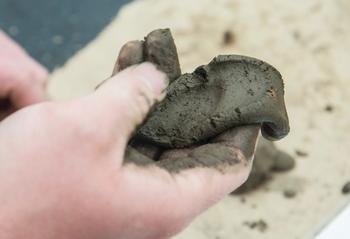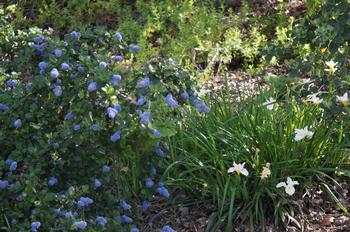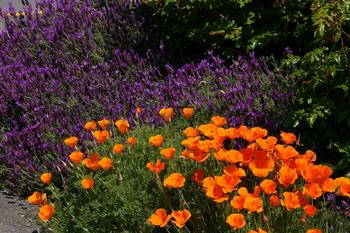Clay soil is a mixed blessing
-
Marty Nelson
-
You know you have clay soil if it sticks like glue to your shoes and garden tools when wet and forms rock-hard clods when dry. You are not alone; the soil in many areas of Marin is high in clay content. While clay soil can make home gardening more challenging, you can still have a beautiful garden by improving the soil and selecting the right plants.
 Moist clay soil sticks together and will form a long ribbon when rubbed between thumb and forefinger. Photo: Flickr
Moist clay soil sticks together and will form a long ribbon when rubbed between thumb and forefinger. Photo: FlickrLet’s cover a few basics about soil. Soil is primarily composed of minerals, organic matter, air, and water. The minerals and organic matter are the solid components, and air and water occupy the pore spaces in between. In most California soils, the mineral content is much higher than the organic content, which determines the soil’s texture. There are three general categories of soil texture: sand, loam, and clay. Clay has the finest particles, so small they can only be viewed through a microscope. The greater the clay content, the denser and heavier the soil will be, and the more compressed the pore spaces will become. The decreased movement of air and water through the pores makes it difficult for many plants to thrive in clay soils.
The bad news is that soil texture can’t be changed. However, it can be structurally improved by incorporating composted organic material. While it is always best to avoid overworking the soil, initially tilling or double-digging compost into the areas to be planted will speed up the soil improvement process. This should be followed by annual additions of two to three inches of organic mulch. Mulch slows down soil compaction and attracts decomposing organisms that contribute to soil fertility. Earthworms are especially helpful in increasing the pore spaces through their tunneling. Over time, the beneficial soil organisms will naturally improve the soil structure. Don’t even think of attempting to change soil texture by adding sand to clay soil. You will end up with bad cement. Native plants are well adapted to Marin's clay soils. Photo: Flickr
Native plants are well adapted to Marin's clay soils. Photo: FlickrMoisture retention is both an advantage and disadvantage of clay soils. The high surface area and negative ionic charge on the tiny clay particles attract both water and mineral nutrients. As a result, water molecules are held in the pore spaces in clay soil much longer than in other soil types. Soil with high clay content should be irrigated slowly and deeply enough to allow the water to penetrate with longer intervals between waterings to permit some drying out.
When the soil becomes saturated due to heavy rains or overwatering, all the pore spaces fill with water leaving no room for air and depriving plant roots of needed oxygen. It’s best to avoid walking on or working with the soil when it is wet, as it may cause further compaction.
The good news is that you can start your garden while waiting for the soil to improve, but you must pay attention to drainage requirements when selecting plants. You can test how well your soil drains by digging a hole about twelve inches deep and filling it with water. If it drains slowly, less than one inch per hour, plants requiring well-drained soil will be stressed. Instead, you can choose plants that are naturally adapted to clay soil. California natives such as yarrow (Achillea millefolium), California poppy (Eschscholzia californica), purple sage (Salvia leucophylla), and Douglas iris (Iris douglasiana) thrive in clay soil. You can even grow vegetables such as lettuce, chard, snap peas, and other crops with shallow roots. Broccoli, cauliflower, and cabbage can also grow well in high clay-content soil. Look for a list of plants for clay soil on the UC Marin Master Gardeners website at marinmg.ucanr.edu. Selecting the right plants is the key to successful gardening in clay soil. Photo: wikimedia
Selecting the right plants is the key to successful gardening in clay soil. Photo: wikimedia



